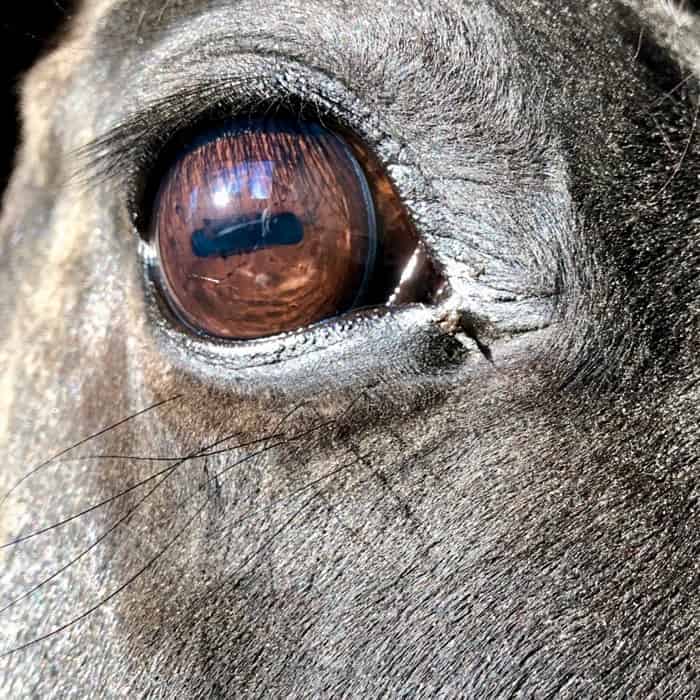Did you ever take a moment to stare a goat in the eye? If you have, you might have noticed something really weird: their pupils are horizontal, or rectangular. It’s one of those things that baffles the mind once it hits you because we’re so used to circular pupils or even vertical slit ones, on account of cats or snakes, respectively.

Square goat eyes? It’s all about enhancing survival
UC Berkeley and Durham University researchers were also intrigued by this atypical pupil shape. Being scientists, they decided to investigate and analyzed pupil shapes of no fewer than 214 land species.
What they eventually found was that pupil shape is linked to the ecological niche or role of the animal. The general pattern they’ve found is that predators generally have vertical slit pupils because these help them judge distance better, making it easier to pounce on prey. Meanwhile, herbivores — which are the target of carnivores — have rectangular slit pupils as a line of defense, offering them a broader field of vision.
As a herbivore, apart from some antlers and hooves, there’s not that much you can do to fend back a predator. The best thing they can do is run away, which is why many herbivores are also fast and agile.
Before you can run, though, you need to know when it’s time to make an exit which is where the goat’s rectangular eyes come in. These enable a panoramic vision that can detect intruders approaching from various directions.
Unlike humans and many other mammals, whose round pupils restrict their peripheral vision, goats can scan their surroundings with unparalleled accuracy. Their rectangular pupils create a wide-angle view, allowing them to spot potential dangers lurking on either side without needing to turn their heads.
With their remarkable peripheral vision, goats can swiftly identify predators, evade ambushes, and ensure their survival in the face of constant danger.
The horizontal pupils also enhance the image quality of objects directly ahead of the animal. This clear front image helps guide rapid locomotion over potentially rough terrain, the researchers noted in Science Advances.
“On the one hand, these animals must see panoramically to detect predators that could approach from various directions,” the experts wrote in their study. “On the other hand, they must see sufficiently clearly in the forward direction to guide rapid locomotion over potentially rough terrain.”
Beyond Goats: A World of Pupillary Diversity

While rectangular pupils might be most famously associated with goats, they are not the only creatures in the animal kingdom to possess this unique ocular feature. Several other species have independently evolved rectangular or slit-shaped pupils to adapt to specific environmental challenges.
For instance, some ungulates such as sheep and horses also boast rectangular pupils, likely for similar reasons as goats—providing a wide field of view while retaining the ability to focus on distant objects.
Grazing animals like goats also rotate their eyes when they bow their heads down so their eye slits are parallel to the ground at all times. They can rotate more than 50 degrees per eye or 10 times more than the human eye. This way, even when they’re grazing, goats can always keep a good eye on their surroundings and any lurking predators.
The existence of goats’ rectangular pupils is a testament to the incredible power of evolution, shaping these animals into highly specialized survivors. Over time, the unique challenges of their environments have influenced their ocular anatomy, bestowing them with extraordinary vision and enhancing their chances of survival. The rectangular shape of goat eyes is a testament to the elegance of nature’s design, a feature perfectly suited for their rugged existence.
FAQ about goat eyes
Goats have rectangular pupils to enhance their field of view, detect predators, and navigate their rugged environments more effectively.
Yes, rectangular pupils are a common characteristic among goats, although some closely related species, such as sheep and horses, also possess rectangular pupils.
Rectangular pupils provide goats with a panoramic perspective, allowing them to have a wider field of view and detect potential threats from the sides without the need to turn their heads.
While goats have excellent peripheral vision and can detect movement well, humans have better visual acuity and depth perception overall.
Yes, goats’ pupils can adjust their shape. In bright light, the pupils constrict into thin, horizontal slits, while in darkness or dim lighting, they dilate, becoming wider rectangles to capture more available light.
Yes, several other species have independently evolved rectangular or slit-shaped pupils, including certain ungulates like sheep and horses, as well as predators like domestic cats and foxes.
Rectangular pupils are a natural characteristic of goats and not an indicator of health. However, changes in the size, shape, or appearance of the pupils could be signs of underlying eye conditions that should be examined by a veterinarian.
While goats, like any animal, can experience eye injuries, there is no evidence to suggest that rectangular pupils increase their vulnerability. Their pupils are adapted to their environment and offer advantages in terms of vision and perception.
Humans cannot replicate the exact visual experience of goats with rectangular pupils. Our round pupils and different visual systems result in distinct perception and visual capabilities.


